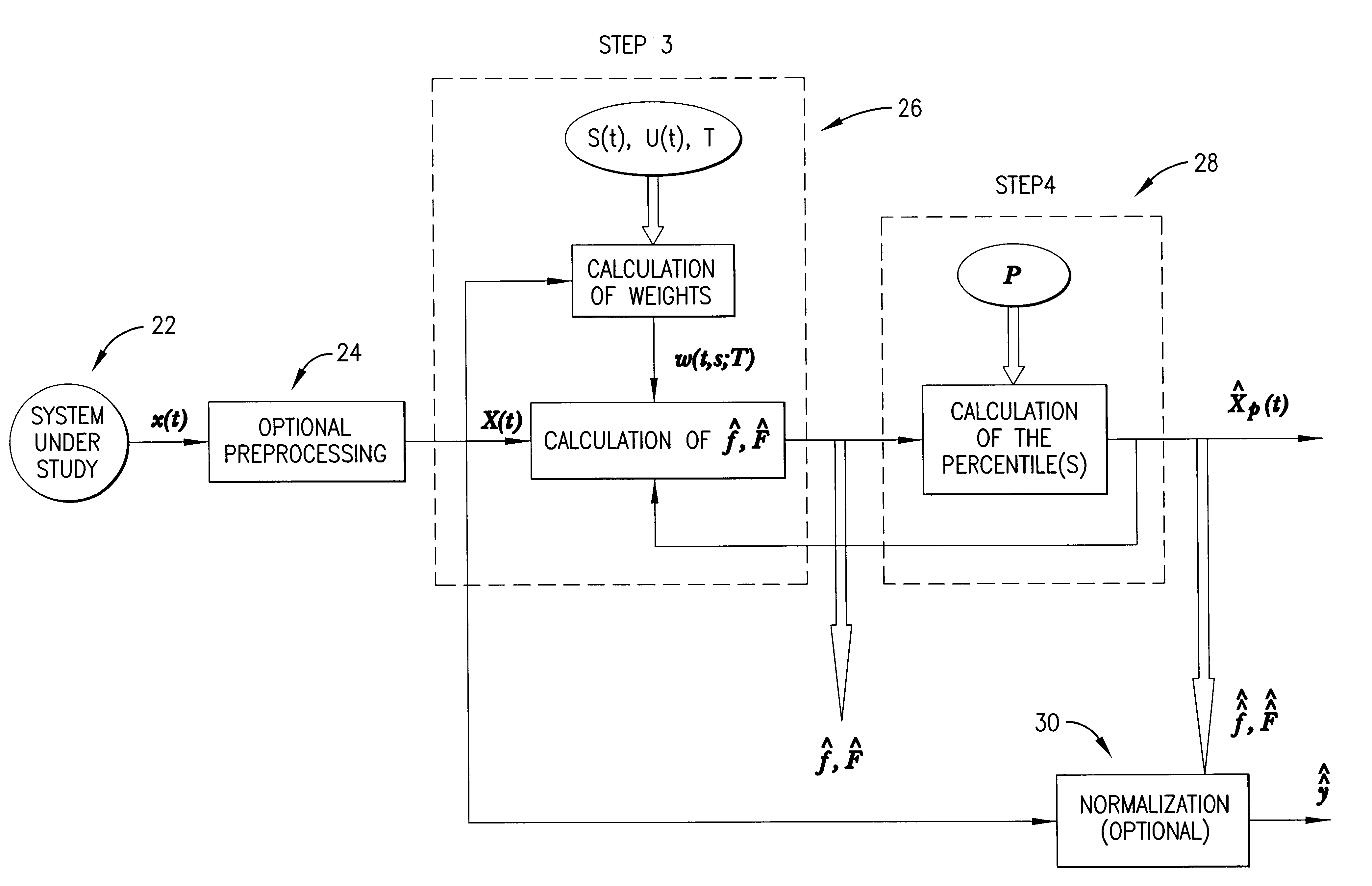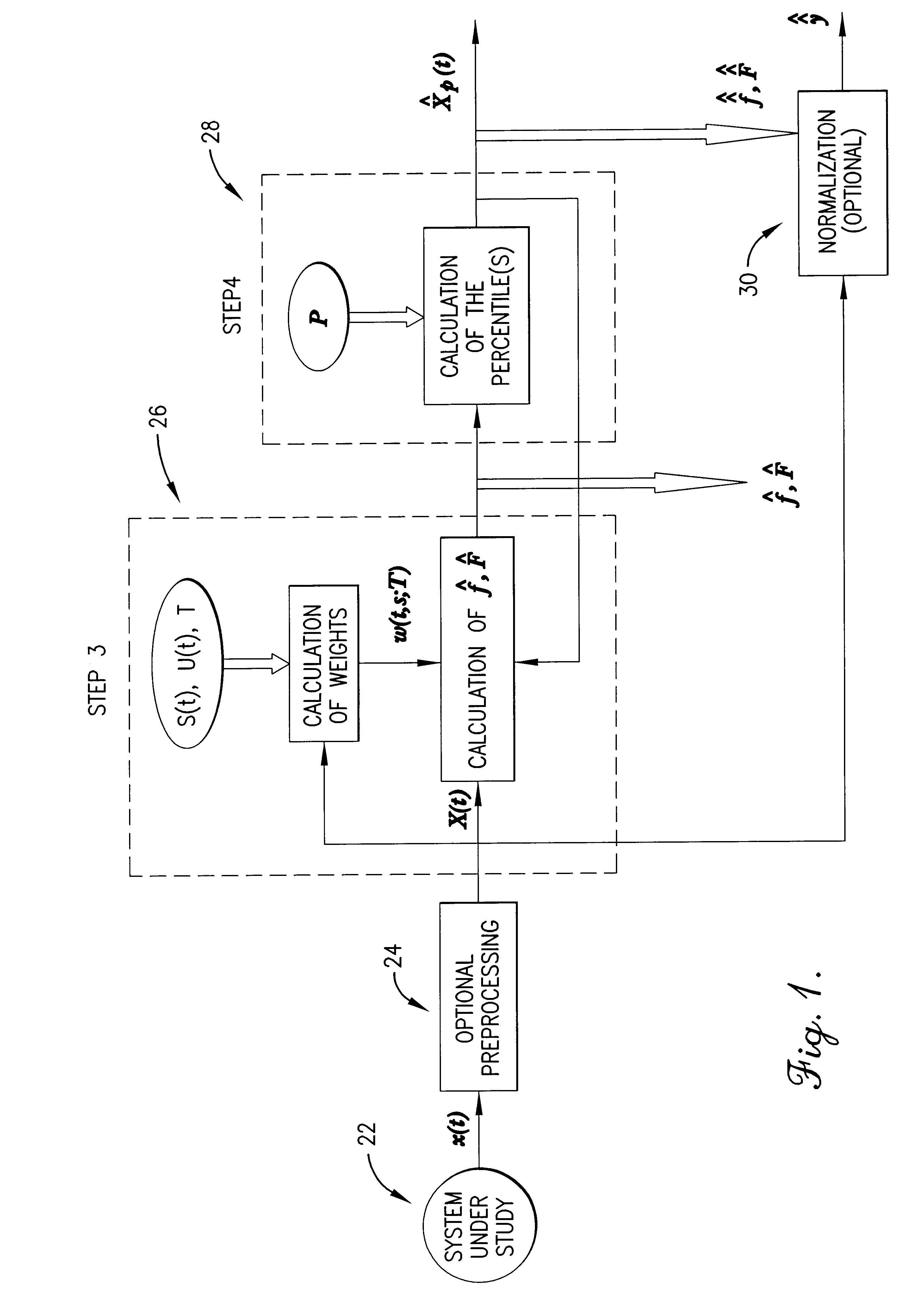Method, computer program, and system for automated real-time signal analysis for detection, quantification, and prediction of signal changes
a real-time signal and computer program technology, applied in error detection/correction, instruments, fluid pressure measurement, etc., can solve problems such as lack of robustness, common use approaches, and inability to detect all types of changes in feature distribution through monitoring individual parameters
- Summary
- Abstract
- Description
- Claims
- Application Information
AI Technical Summary
Benefits of technology
Problems solved by technology
Method used
Image
Examples
example
Financial Analysis
In an exemplary illustration of application of the present invention to financial analysis, a three-dimensional raw input signal, x(t), is received such that, as shown in FIG. 4, x(t) is the price at time t of three stocks (IBM, GM, and MRK) during a 360 minute period on Oct. 23, 1994.
Pre-processing is then performed on x(t) to yield a feature signal, X(t), as shown in FIG. 5, such that X(t) is the value of a portfolio at time t comprising the three stocks of interest: X(t)=300*GM+100*IBM+80*MRK.
Next, as time, t, evolves, the time-weight function, w(t,s), is defined for use at each time point. In the present example, w is defined so that the time-weight is a moving square window of length T=100 minutes. In practice, more complicated time-weights could be used that include a dependence upon an auxiliary signal such as oil prices and supplies which may have a direct impact in GM stock prices by influencing consumer preferences and cash availability. Another time-weig...
PUM
| Property | Measurement | Unit |
|---|---|---|
| time | aaaaa | aaaaa |
| voltage | aaaaa | aaaaa |
| time-weighted function | aaaaa | aaaaa |
Abstract
Description
Claims
Application Information
 Login to View More
Login to View More - R&D
- Intellectual Property
- Life Sciences
- Materials
- Tech Scout
- Unparalleled Data Quality
- Higher Quality Content
- 60% Fewer Hallucinations
Browse by: Latest US Patents, China's latest patents, Technical Efficacy Thesaurus, Application Domain, Technology Topic, Popular Technical Reports.
© 2025 PatSnap. All rights reserved.Legal|Privacy policy|Modern Slavery Act Transparency Statement|Sitemap|About US| Contact US: help@patsnap.com



